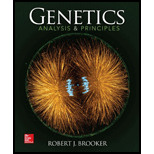
Concept explainers
Discuss why viruses are considered nonliving.
To review:
The viruses that are considered as non-living.
Introduction:
The organisms that cannot reproduce, move, breathe, and grow are called non-living organisms whereas, living organisms are the organisms that can grow, develop, stimulate towards environment, reproduce, and are able to move.
Explanation of Solution
Viruses are tiny infectious agents that are able to replicate only when, they are present inside the cell of a living organism. They are able to cause infections in every type of living form like, animals, microorganisms, bacteria, plants and also include archaebacteria. They are a different type of organism that is not formed up of living cells.
Viruses consist of lipid envelope, protein capsids, and nucleic acid genome. They are not considered as living organisms because they are able to multiply only when they are inside the living cell. Outside the living cell, they are non-impactful and non-living. They cannot survive outside the cell. They lack the properties of living organisms like, energy, metabolism, waste productions, growth and development and independent reproduction.
Therefore, it can be concluded that viruses are considered as non-living because they cannot move, replicate, grow and develop in the absence of a living cell.
Want to see more full solutions like this?
Chapter 17 Solutions
Genetics: Analysis and Principles
- Which biological system contains a protein nucleocapsid surrounding 2 antiparallel polynucleotide strands (held together by hydrogen bonds), with deoxyribose sugars, but no ribose sugars? a single-stranded RNA viroid (like avocado sun blotch viroid) a double-stranded RNA virus (like the reovirus family) a single-stranded DNA virus (like fX174 virus of E. coli) a double-stranded DNA virus (like the smallpox virus) a single-stranded RNA virus (like tobacco mosaic virus)arrow_forwardWhy are viruses considered non living?arrow_forwardViruses are made up of the same biomolecules as cellular organisms (DNA, RNA, proteins, lipids, etc.). They infect cells and replicate themselves using resources from the host cells. Scientists discovered a previously unknown strain of virus in the tropical Pacific Ocean and it can infect higher-order eukaryotes. Initial analysis revealed that the virus is mainly composed of nucleic acids, proteins, and lipids. Chemical analysis after complete hydrolysis revealed the following building blocks (by weight): Chemical components Nucleosides Amino acids Lipids, phosphates, and carbohydrates Percentage by weight 20 30 50 Analysis of percentages of nucleosides yielded the following results (by molar ratio): Nucleosides A G T C U Percentage by mole 19 29 19 29 4 Researchers determined that the lipids found in the virus form a bilayer membrane surrounding the virus, and are obtained from the membrane of the host cell during virus maturation and exit from host cell. Further…arrow_forward
- why testing known inhibitors such as the HIV-1 protease inhibitors nelfinavir and atazanavir used in this experiment, is beneficial for creation of new antiviral drugs. Is it due to conserved viral DNA or something else entirely? nature.com/articles/s41467-021-20900-6arrow_forwardAre viruses living? Why or why not?arrow_forwardwhile viruses are considered by most scientists to be nonliving they do show some characteristics of life, including the correlation of structure and function. Discuss how the structure of a virus correlates with its functionarrow_forward
- Is there such a thing as a “good virus”? Explain why or why not.Consider both bacteriophages and viruses of eukaryotic organisms.arrow_forwardName any three viruses which have RNA as a genetic material?arrow_forwardDescribe Specialized transduction: transfer of specific genetic material by means of a virus carrier.arrow_forward
- Which of the following is a known characteristic that can lead to genetic changes in some viruses? Operons in the viral genome can undergo homologous recombination, leading to genetic rearrangements. Reassortment of segmented genomes can occur if a host cell is co-infected with two different viral strains. RNA polymerases used in replication of the viral genome have proofreading capability. Environmental conditions can trigger the SOS response, which triggers mutations in the viral genome.arrow_forwardDescribe in general terms the strategy used by single-stranded (ss) DNA viruses to synthesize their nucleic acids and proteinsarrow_forwardIn some viruses the flow of information is in reverse that is ,from RNA to DNA.can you suggest a simple name to the process?arrow_forward
 Human Anatomy & Physiology (11th Edition)BiologyISBN:9780134580999Author:Elaine N. Marieb, Katja N. HoehnPublisher:PEARSON
Human Anatomy & Physiology (11th Edition)BiologyISBN:9780134580999Author:Elaine N. Marieb, Katja N. HoehnPublisher:PEARSON Biology 2eBiologyISBN:9781947172517Author:Matthew Douglas, Jung Choi, Mary Ann ClarkPublisher:OpenStax
Biology 2eBiologyISBN:9781947172517Author:Matthew Douglas, Jung Choi, Mary Ann ClarkPublisher:OpenStax Anatomy & PhysiologyBiologyISBN:9781259398629Author:McKinley, Michael P., O'loughlin, Valerie Dean, Bidle, Theresa StouterPublisher:Mcgraw Hill Education,
Anatomy & PhysiologyBiologyISBN:9781259398629Author:McKinley, Michael P., O'loughlin, Valerie Dean, Bidle, Theresa StouterPublisher:Mcgraw Hill Education, Molecular Biology of the Cell (Sixth Edition)BiologyISBN:9780815344322Author:Bruce Alberts, Alexander D. Johnson, Julian Lewis, David Morgan, Martin Raff, Keith Roberts, Peter WalterPublisher:W. W. Norton & Company
Molecular Biology of the Cell (Sixth Edition)BiologyISBN:9780815344322Author:Bruce Alberts, Alexander D. Johnson, Julian Lewis, David Morgan, Martin Raff, Keith Roberts, Peter WalterPublisher:W. W. Norton & Company Laboratory Manual For Human Anatomy & PhysiologyBiologyISBN:9781260159363Author:Martin, Terry R., Prentice-craver, CynthiaPublisher:McGraw-Hill Publishing Co.
Laboratory Manual For Human Anatomy & PhysiologyBiologyISBN:9781260159363Author:Martin, Terry R., Prentice-craver, CynthiaPublisher:McGraw-Hill Publishing Co. Inquiry Into Life (16th Edition)BiologyISBN:9781260231700Author:Sylvia S. Mader, Michael WindelspechtPublisher:McGraw Hill Education
Inquiry Into Life (16th Edition)BiologyISBN:9781260231700Author:Sylvia S. Mader, Michael WindelspechtPublisher:McGraw Hill Education





